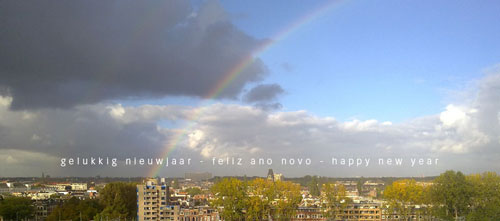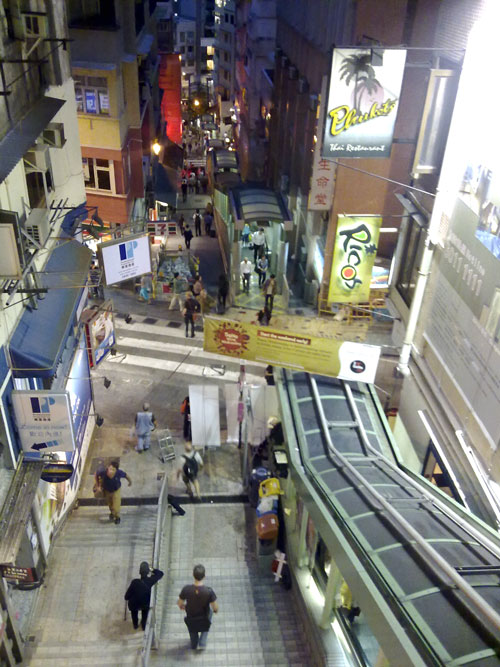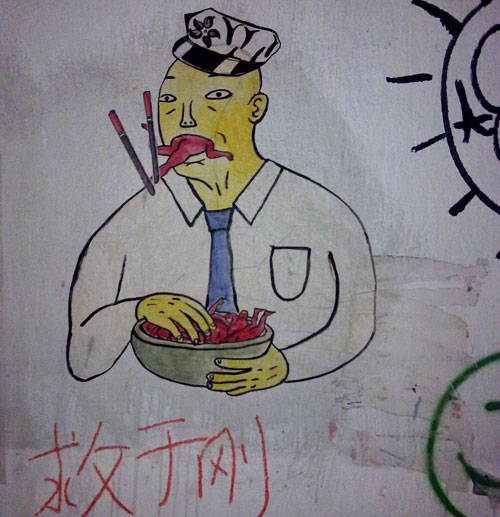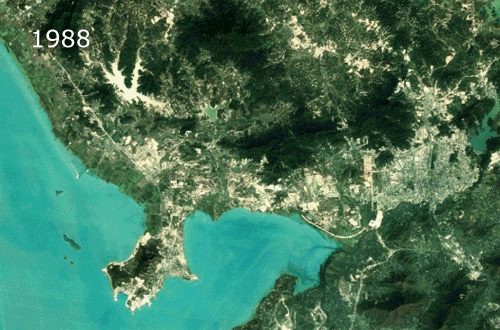Urban Change wishes you an inspiring 2011
Projetos Urbanos deseja você um 2011 com ótimas idéias

Urban Change wishes you an inspiring 2011
Projetos Urbanos deseja você um 2011 com ótimas idéias

Soho, near the central district of Hong Kong Island, is a dynamic urban area full of restaurants, shops and nightlife. The traditional hill-side neighborhood stretches more or less from the lower Queens Road Central until Robinson Road at the top, having the busy Hollywood Road in the mid level.
In the early nineties the Central-Mid-Levels Escalator System was built, able to move people up-hill over 800 meter distance and 135 meter level. The system has entrances at most streets. In the morning it descends, to help people in the neigborhood get to work quicker; at night it ascends, to get inhabitants back home and to bring people up to the bars and restaurants.

View of the Central-Mid-Levels Escalator
This easy access has triggered a rapid gentrification and increasing mixed use of the area. The direct surroundings of the escalator are completely dominated by tourist restaurants and fast food chains. Neighboring streets are steadily being occupied by luxurious apartments for expats and fancy art galleries. In some of the streets an interesting mix can be seen between new art galleries and traditional Hong Kong craftsmen workshops, but due to the ground prices this unique situation is unlikely to last long.

Art gallery and vintage shop in Soho

Wall graffiti in Soho
Explore Soho Hong Kong and the escalator system in Google Maps
The city of Shenzhen, in the Pearl River Delta, is an impressive example of the dazzling growth rate in Chinese cities. In 30 years, Shenzhen grew from a fishermen’s village to a metropolis of 10 million inhabitants, closely connected with Hong Kong and the rest of the PRD. Note that not only green land was urbanized. The city literally expanded into the sea, by building on new reclaimed land.


Read more:
www.vitruvius.com.br/… (Portuguese)

The central part of the city of Hong Kong lies on both sides of Victoria Harbour, on Hong Kong Island in the south, and the peninsula of Kowloon in the north. Kowloon still has traditional neighborhoods with lots of street markets and high-density urban blocks. The area of Mong Kok, in the middle of Kowloon, has one of the highest urban densities in the world, over 40.000 inhabitants per square kilometer. Real estate pressure is bringing massive office development from saturated Hong Kong island to Kowloon and is beginning to transform its waterfront.


At the building sites on reclaimed land west of Kowloon, one can see the rise of the new Kowloon. The integration of Austin metro station, Kowloon station (Airport Express line) and the new West Kowloon Express Rail Link Terminus (High Speed rail to mainland China) will turn this area into an international hub. Around Kowloon station, residential towers and offices are almost completed, including the 118 storey (484 m) ICC building. A few kilometers to the east, an equally large site will be developed at the old Hong Kong airport Kai Tak.


Hip hop artist Dregs One discusses the gentrification process in his neighborhood in San Francisco: